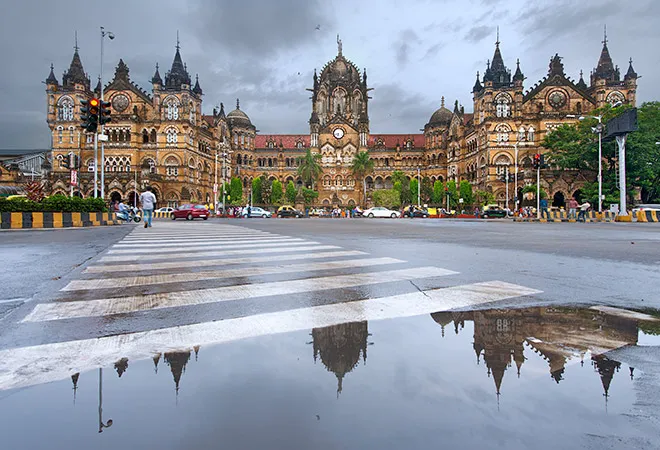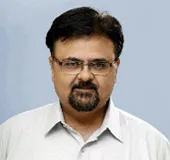
Mumbai’s public health crisis, compounded by the COVID-19 outbreak, is likely to worsen during the oncoming monsoon months. The southwest monsoon is expected to hit Mumbai’s coast around mid-June, bringing with it, unrelenting troubles in the form of waterlogging, frequently inundating large parts of the city and suburbs. The coming months will thus also mark Mumbai’s annual date with its age-old public health concerns in the form of vector and waterborne diseases.
The ongoing pandemic-induced lockdown has severely impacted all the critical pre-monsoon works undertaken by the Brihanmumbai Municipal Corporation (BMC). This includes preparing the civic health machinery for the monsoon-related diseases, its city-wide anti-malaria and anti-dengue awareness campaigns, fumigation and insecticide spraying of all high-risk areas – especially the slums, the annual cleaning of the stormwater drains and nullahs, repairs and reinforcement work of dilapidated buildings, and repairs and maintenance of roads and bridges.
Pre-monsoon health measures in disarray
The shortage of staff poses the biggest worry for the BMC’s health department. While absenteeism has been higher than average over the fear of infections, every single available hand has been pressed into pandemic mitigation duties. So much so, that there are no personnel available for the immunisation drives and the ‘Fight the Bite’ anti-malaria and dengue awareness campaigns that are undertaken across the city, especially in all the slums, before the rains arrive. For example, all the 600-odd employees of the BMC’s insecticide department have currently been assigned full-time fumigation duty to arrest the spread of COVID-19. Some of these employees have been released from COVID-19 duties from 14 May onward – after a delay of two months – to begin the pre-monsoon disease prevention measures such as the door-to-door inspections, fogging, spraying of disinfectants, identifying mosquito breeding grounds and killing rodents etc.
These unintentional lapses, caused because of the unavoidable concentration on combatting COVID-19, are likely to reverse the gains achieved in controlling the spread of seasonal communicable diseases over the past decade. The city’s remarkable achievement in preventing the spread of malaria, from over 80,000 cases in 2010 to just over 4,000 in 2019 – a reduction of 95 percent – thanks to the ‘Fight the Bite’ communications strategy and action plan prepared by the Municipal Corporation of Greater Mumbai (MCGM) in collaboration with ORF in 2011, might suffer a big setback. From April each year, the MCGM’s health department embarks on its concerted campaign to tackle the monsoon-related public health issues. This includes setting up of fever clinics and also reserving 10 percent of beds or an entire ward in each municipal hospital to exclusively treat monsoon-related illnesses. Since 2011, concerted efforts under this plan ensured that Malaria-related casualties dropped to single digits for the first time in 2017, when six persons died of the preventable ailment. In 2018, the deaths further fell to three. The BMC achieved the remarkable feat of zero malaria deaths in 2019.
But for now, monsoon preparedness is the last thing on the minds of the city government. As on date, only a few of the wards and critical care units function normally to handle non-coronavirus patients. The rest of the hospital wards are either shut or reserved exclusively for COVID-19 patients. The KEM hospital, the biggest civic hospital in the city, has planned to gradually open up some of its wards that are currently shut to admit dengue and malaria patients from the second week of June. Doctors are yet unaware about how COVID-19 will interact with the other curable, but potentially life-threatening, monsoon-related ailments.
Cleaning of stormwater drains and nullahs locked down
Though the government has exempted the cleaning of nullahs and stormwater drains from the lockdown, this crucial work that helps prevention of waterlogging in low-lying areas, is severely disrupted. The contractors hired by the MCGM at a cost of INR 1.40 billion are expected to remove over half-a-million tonnes of silt from the 715-km-long network of nullahs and stormwater drains before the deadline of 30 May. However, as of mid-May, they have only managed to clean just 15 percent of the network. The desilting of the 21-km-long Mithi River, blamed for the floods of July 2005, is also nowhere near achieving its 30 May deadline, with only about 4-km stretch being desilted so far.
The only silver lining comes from the Western Railway (WR) and Central Railway (CR), the two zones of the Indian Railways that operate Mumbai’s suburban train systems. Taking advantage of the stoppage of services owing to the lockdown, both CR and WR have claimed that they have not only completed all the pending maintenance works, but also removed 250,000 cubic metres of garbage from all the culverts, drains and nullahs running alongside and under the tracks on the entire system with the help of MCGM. However, it is worth noting that this is not the first time that the railways have made such a claim. Both the MCGM and the railways give such guarantees each year, only to be exposed as many parts of the city get submerged, and local train services come to a grinding halt.
Another casualty this year has been the BMC’s localised flood mitigation strategy at the traditional spots prone to inundation. A survey conducted in February and March had identified 69 waterlogging spots across the city. Several new vulnerable spots at many of the ongoing infrastructure construction sites such as the metro were also identified. Due to the lockdown, construction work at 45 sites which was in different stages of completion, came to a halt.. The remaining 24 sites, mostly new vulnerable spots, are yet to see any action. Pumps to drain out waterlogged areas too have not been installed yet.
Road and bridge repairs compromised
The major and minor repairs of 360 roads and 235 bridges and flyovers was started in early March. It also involved the reconstruction of 11 dilapidated bridges that were identified as dangerous for public use in a survey undertaken by the MCGM following the partial collapse of the Gokhale Bridge, in Andheri in July 2018, and the collapse of the foot-over bridge at the CST on DN Road, in March 2019. But only after a few days of activity, the work had to be halted. Besides this, the repairs of 224 minor bridges, which was initiated in October 2019, has also been stalled.
The officials are now quite uncertain about the resumption of the civil works before the city is lashed by heavy rains. Most migrant labourers, hired by the contractors have returned home and would take months to return even after things get back to normal. With the supply chains severely affected, they are also unsure about the availability of raw material, especially cement and steel.
Salvaging Mumbai – It’s still possible
With the onset of rains just a few weeks away, the state government can still make some urgent decisions to save the city from the monsoon misery that is likely to be amplified this year.
The first and most critical resolve the ruling coalition must make is to ensure that the apparent cracks that have developed in the government owing to the stark differences in the handling of the virus outbreak are quickly sealed. The government must work as one cohesive entity. It must wholeheartedly assist the BMC and ensure that all the parastatal bodies with overlapping mandates interfering with the governance of Mumbai work in unison to support the municipal body’s efforts. The opposition, on the other hand, must not take undue advantage of the internal differences in the government. If it cannot help the state in this hour of crisis, it must at least not create roadblocks in the government’s effort to fight a two-front war against the ongoing pandemic as well as the impending monsoon mayhem.
The MMRDA must be ordered to abruptly stop the work on the metro lines, which was resumed after a month of lockdown, and divert its 11,000-strong manpower and heavy machinery to assist the BMC in its monsoon preparedness effort. The workload of the private contractors hired for the nullah and drains clean-up by the BMC can be effectively undertaken by the metro workforce and completed by 10 June.
Likewise, the BMC must partner with local associations of medical practitioners including the Association of Medical Consultants Mumbai, the General Practitioners Association of Greater Bombay and the Association of Physicians of India to set up neighbourhood clinics to treat all those who fall prey to the monsoon-related diseases. Such participatory approach can go a long way in ensuring the tertiary municipal hospitals don’t come under increased pressure and continue to effectively and efficiently carry out their functions and duties for the city’s COVID-19 effort. It must also rope in the services of retired health practitioners to take over this burden.
The coming months also provide an opportunity for the corporate leadership to divert a small portion of their CSR funds from the COVID-19 effort to help the BMC overcome the looming seasonal public health challenges.
The views expressed above belong to the author(s). ORF research and analyses now available on Telegram! Click here to access our curated content — blogs, longforms and interviews.




 PREV
PREV


